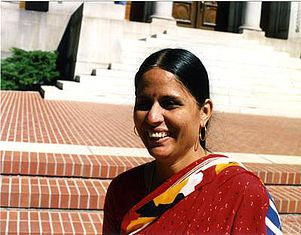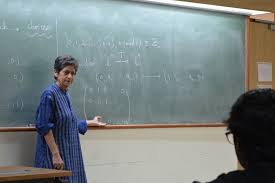
Shakuntala Devi is often described as "India's most famous woman mathematician". Her biopic led discussion like what does a mathematician do? Is mathematics all about performing massive computations? Or is there more to it?
A 🧵on Indian women mathematicians by @kaneenikasinha





https://t.co/Rsb2aLv4v1


Prof. Ramdorai has also worked with the Indian government in several capacities for mathematics education in India. She was a member of the PM's Scientific Advisory Council from 2009-14.



More from Math
Ok, it's time for a #FUNctionalAnalysis thread! Let's talk about Hilbert spaces. (I hope you like linear algebra, because that's what we're
If you want to impress people, you can just say a Hilbert space is just a complete infinite dimensional inner product space and leave it at that, but let's talk about what that actually means.
When you first learn about vectors, you talk about them as arrows in space; things with a magnitude and a direction. These are elements of R^n where n is the number of dimensions of the space you care about.

You also talk about the dot product (or inner product) as a way to tell when vectors are orthogonal. (I'm purposely saying "orthogonal" instead of "perpendicular" here, but when you actually think about arrows, it's the same thing.)

As my linear algebra students are about to see, R^n is far from the only interesting vector space. A classic example is the space of polynomials of dimension less than or equal to n

— syzygay (@syzygay1) August 9, 2020
If you want to impress people, you can just say a Hilbert space is just a complete infinite dimensional inner product space and leave it at that, but let's talk about what that actually means.
When you first learn about vectors, you talk about them as arrows in space; things with a magnitude and a direction. These are elements of R^n where n is the number of dimensions of the space you care about.

You also talk about the dot product (or inner product) as a way to tell when vectors are orthogonal. (I'm purposely saying "orthogonal" instead of "perpendicular" here, but when you actually think about arrows, it's the same thing.)

As my linear algebra students are about to see, R^n is far from the only interesting vector space. A classic example is the space of polynomials of dimension less than or equal to n



























